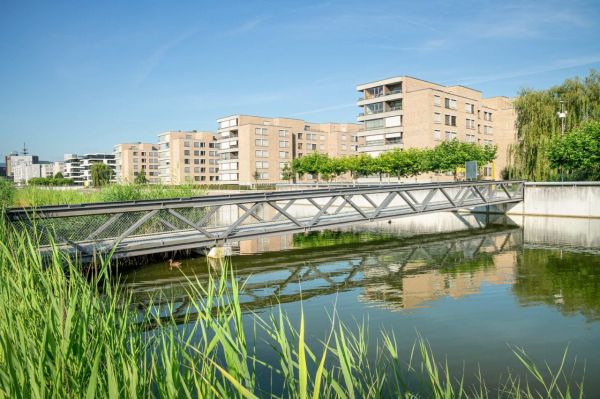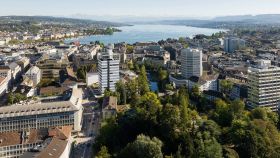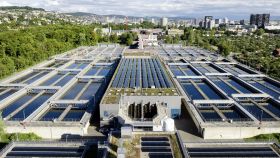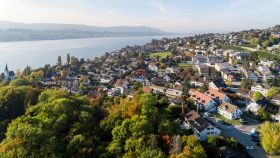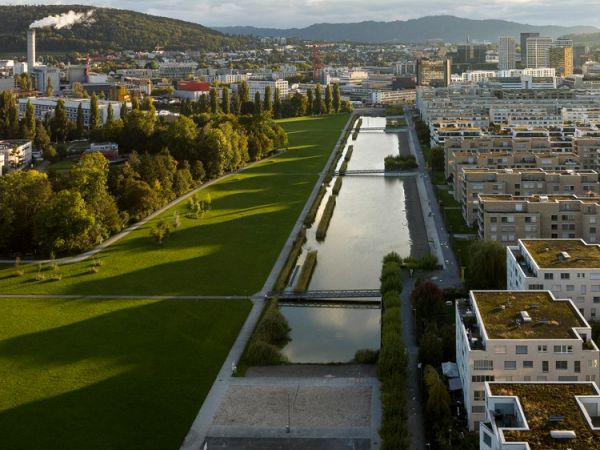

What began in 1927 with the first district heating pipes in Zurich West and in 1928 with the ETH district heating power plant in the university district developed over the following decades into a large district heating district in the city of Zurich. The construction of a large tunnel connecting the Hagenholz tunnel through the Zürichberg to the University Hospital followed in 1972. Today, the network is over 150 km long and has connections to more than 6,600 properties.
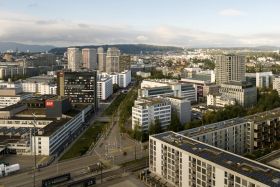
As energy sources, ewz primarily uses waste heat from the waste incineration plant in Hagenholz and heat from the Aubrugg wood-fired combined heat and power plant. On the long-term average, the energy mix is around 70 percent carbon-neutral.
At the Hagenholz waste incineration plant, waste that is no longer usable is incinerated in an environmentally friendly manner and the energy present in the waste is released through thermal waste recycling. The combustion process drives a steam-water cycle that generates ecologically valuable electricity and heat via a steam turbine – according to the principle of cogeneration. At the same time, electricity and usable heat can be produced for heating purposes or production processes in a highly efficient way. Waste-to-energy is a local, climate-friendly energy source. Each Züri sack has a calorific value equivalent to 1.7 litres of heating oil on average. One tonne of rubbish contains the energy of 300 litres of heating oil.
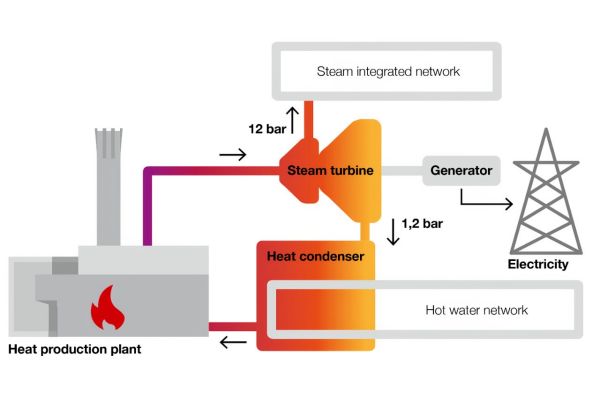
Waste-to-energy as an energy source
The Hagenholz waste-to-energy plant delivers waste-to-energy as a base load throughout the year. The district heating network consists of two transmission lines, the flow and return, which form a closed water system. The flow takes the hot water from the place of heat production to the heat recipient. Depending on the outside temperature, temperatures generally range from 90 to 120 °C. The return flow brings the water, which has cooled to 50 °C, back to the heat production plants, which heat it up again – the cycle starts all over again. At the consumers’ locations, heat is transferred via a district heating transfer station, which ensures the transfer to the property’s heating system with a heat exchanger.
While the Hagenholz waste incineration plant ensures the base load for the heat supply, the Aubrugg wood-fired combined heat and power plant provides the mid-load in the heating season from September to May. Gas and oil boilers are used to cover the peak load.
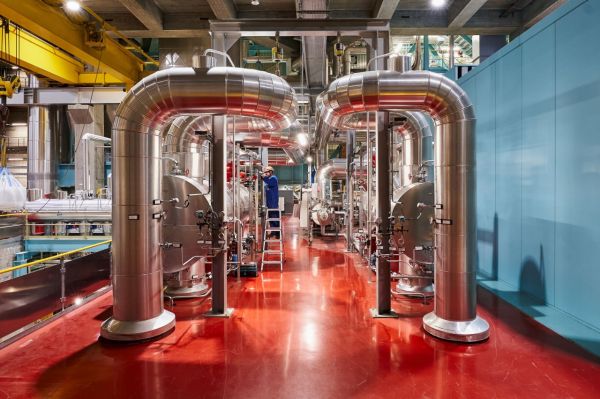
Climate-friendly energy from local wood
The Aubrugg wood-fired combined heat and power plant generates heat and power from domestic wood, contributing to sustainable and carbon-neutral energy and heat production. Only untreated fresh wood (forest chips, thinning wood, landscaping wood and untreated residual wood from the wood processing industry) from the forests and landscaping in the region is used. The wood is processed into combustible wood chips while still in the forest and transported to the Aubrugg wood-fired combined heat and power plant, where it is monitored and temporarily stored for incineration. The ash can be used as an aggregate for concrete production.
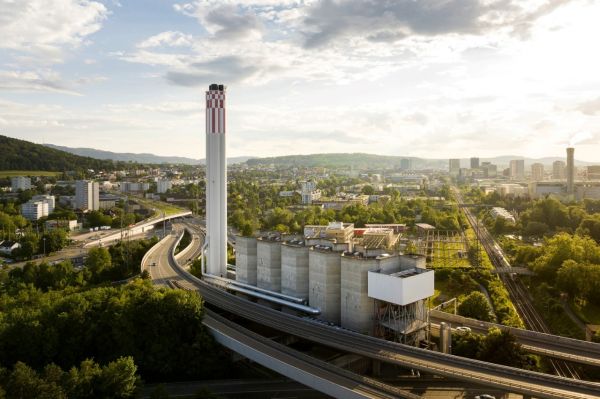
The district heating network of the waste incineration plant and wood heating network will be expanded in four stages between 2022 and 2040. The key element of the first stage was the construction of a connecting pipeline between the district heating regions of Zurich North and Zurich West. Since October 2022, the hot water for the Zurich West district heating region has been produced primarily at the Hagenholz waste incineration plant and the Aubrugg wood-fired combined heat and power plant in Zurich North and supplied via the approximately 6 km connecting transmission line.
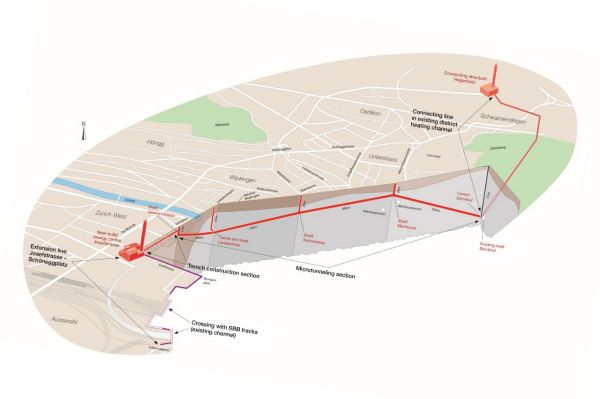
Since 2017, the Hagenholz waste incineration plant has included a heat storage system. Using excess energy, hot water is loaded into the heat storage system and discharged back into the district heating network to cover peak loads. These and other measures will ensure that the district heating of these energy networks will meet the net zero target by 2040 at the latest.
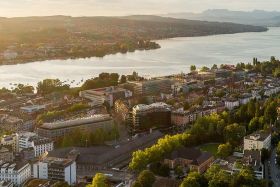
Numerous residential properties and large-scale consumers such as Zurich main station, the university, the university hospital and Swiss television appreciate the high reliability of supply provided by district heating.
University Hospital Zurich (USZ)
University Hospital Zurich has exacting requirements with regard to operations and maintenance. The energy and media supply as well as the operational readiness and functionality of communication systems, building technology and medical devices must be ensured around the clock, 365 days a year.
University Hospital Zurich was the first customer to use absorption machines to produce cooling with district heating. Since 2002, these absorption machines have been in use to generate a large part of the total cooling capacity requirement of 7 MW – both for cooling appliances and for air conditioning in summer.
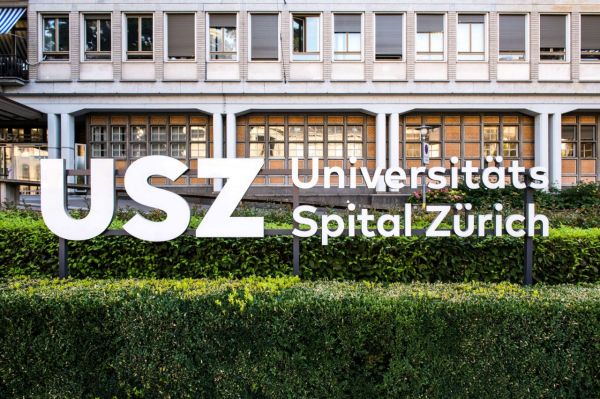
Glattpark Opfikon
In an initial expansion phase, twelve properties with a total connected load of 4.9 MW were connected through 2010. In 2011, new main pipes were laid, enabling the heating connection of the second stage of the Glattpark complex. The Glattpark properties require a maximum connected load of around 13 MW. The construction of around 30 large properties was completed in 2017.
